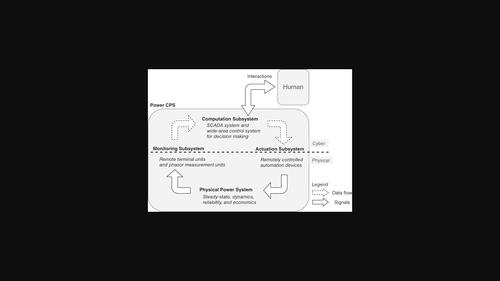Power electronics‐interfaced cyber‐physical power systems: A review on modeling, simulation, and cybersecurity
IF 5.4
3区 工程技术
Q2 ENERGY & FUELS
引用次数: 0
Abstract
We present the review of two interlinked challenges in modern electric power systems: the transformation to a cyber‐physical system, and the integration of power electronics‐interfaced renewables. Electric power systems are being modernized with the integration of power electronics‐interfaced devices (PEID) and communication‐enabled cyber‐applications. This paper reviews the concepts, studies, and testbeds for cyber‐physical power systems (CPPS), as well as the modeling of power electronics‐based devices for physical power system stability simulations. The CPPS concept is introduced in the National Institute of Standard Technology framework for cyber‐physical systems, with an emphasis on CPPS subsystems. For the physical subsystem, PEID components are generalized into the primary source and the grid interface, while controllers are generalized as a reference generator and a reference tracker. Next, the cybersecurity research objectives are summarized, followed by a categorization of CPPS studies. Further, testbed techniques for integrating communication networks with power system simulation are reviewed. Also, challenges and future directions in the area of CPPS are discussed.

电力电子‐接口网络‐物理电力系统:建模、仿真和网络安全综述
我们回顾了现代电力系统中两个相互关联的挑战:向网络物理系统的转变,以及电力电子接口可再生能源的集成。随着电力电子接口设备(PEID)和通信网络应用的集成,电力系统正在实现现代化。本文回顾了网络物理电力系统(CPPS)的概念、研究和试验台,以及用于物理电力系统稳定性仿真的基于电力电子器件的建模。CPPS概念被引入到国家标准技术研究所的网络物理系统框架中,重点是CPPS子系统。对于物理子系统,将PEID组件概括为主源和网格接口,将控制器概括为参考发生器和参考跟踪器。其次,对网络安全研究目标进行了总结,并对CPPS研究进行了分类。此外,对通信网络与电力系统仿真相结合的试验台技术进行了综述。同时,对CPPS领域面临的挑战和未来发展方向进行了讨论。
本文章由计算机程序翻译,如有差异,请以英文原文为准。
求助全文
约1分钟内获得全文
求助全文
来源期刊

Wiley Interdisciplinary Reviews-Energy and Environment
ENERGY & FUELS-
CiteScore
11.70
自引率
3.30%
发文量
42
期刊介绍:
Wiley Interdisciplinary Reviews: Energy and Environmentis a new type of review journal covering all aspects of energy technology, security and environmental impact.
Energy is one of the most critical resources for the welfare and prosperity of society. It also causes adverse environmental and societal effects, notably climate change which is the severest global problem in the modern age. Finding satisfactory solutions to the challenges ahead will need a linking of energy technology innovations, security, energy poverty, and environmental and climate impacts. The broad scope of energy issues demands collaboration between different disciplines of science and technology, and strong interaction between engineering, physical and life scientists, economists, sociologists and policy-makers.
 求助内容:
求助内容: 应助结果提醒方式:
应助结果提醒方式:


